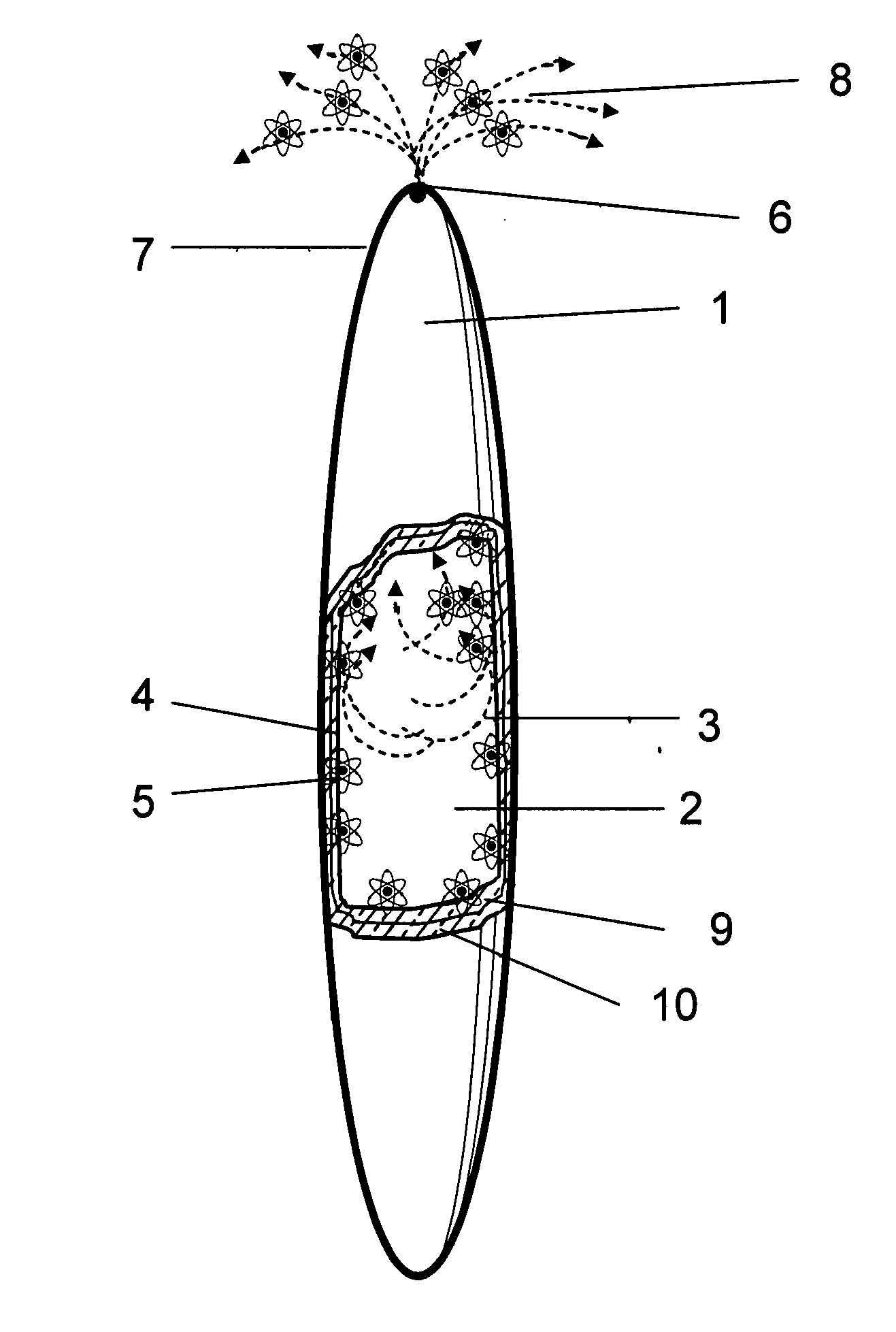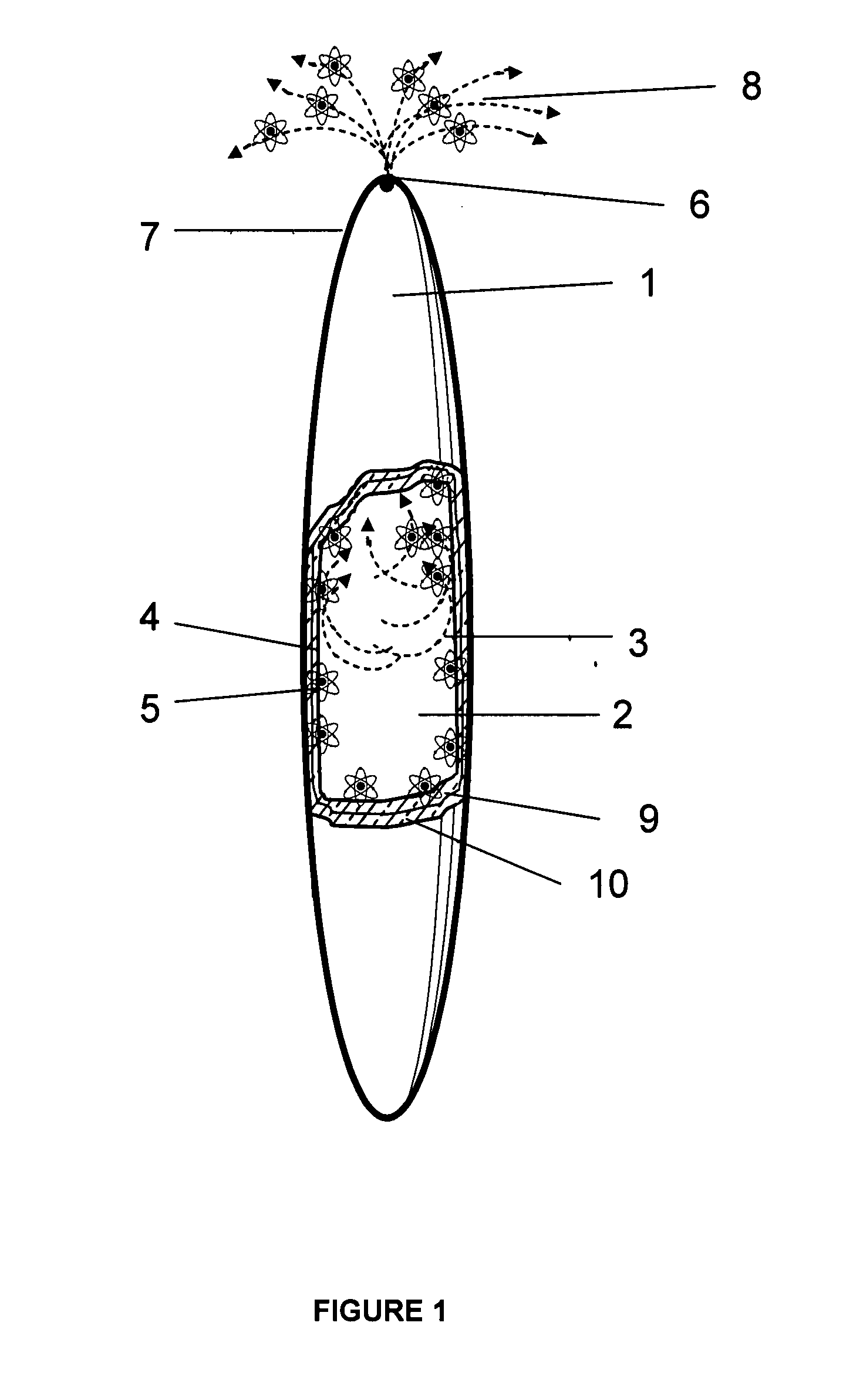Scent sampling devices and related methods
a sampling device and scent technology, applied in the field of scent sampling devices, can solve the problems of increasing the cost of product packaging, so as to reduce the cost of manufacturing, eliminate sample spraying and package tampering, and reduce the effect of manufacturing cos
- Summary
- Abstract
- Description
- Claims
- Application Information
AI Technical Summary
Benefits of technology
Problems solved by technology
Method used
Image
Examples
Embodiment Construction
[0057]FIG. 1 is a cross-section side view of scent sampling container 1 showing air 3 circulating inside the container cavity 2 and coming in contact with inside walls 4 of the container 1 where it picks up molecules of the scented oil 5 that has coated inside walls 4 of the container. The air then moves toward opening 6 in container outside wall 7 when pressure is applied to the outside wall 7 of the container. As air 8 exits from the container it may be experienced by a person who is using the container as a scent sampling vehicle. This figure also shows inside layer 9 and outside layer 10 of container 1.
[0058]FIG. 2 is a side view of a scent sampling container 1 showing air 8 exiting from opening 6 in the container wall.
[0059]FIG. 3 is a cross-section side view of a scent sampling container 1 showing air 11 entering the container through an opening 6 in the container when pressure is released from the outside walls of the container. As air 12 moves toward cavity 13 of the contain...
PUM
| Property | Measurement | Unit |
|---|---|---|
| thickness | aaaaa | aaaaa |
| thickness | aaaaa | aaaaa |
| pressure | aaaaa | aaaaa |
Abstract
Description
Claims
Application Information
 Login to View More
Login to View More - Generate Ideas
- Intellectual Property
- Life Sciences
- Materials
- Tech Scout
- Unparalleled Data Quality
- Higher Quality Content
- 60% Fewer Hallucinations
Browse by: Latest US Patents, China's latest patents, Technical Efficacy Thesaurus, Application Domain, Technology Topic, Popular Technical Reports.
© 2025 PatSnap. All rights reserved.Legal|Privacy policy|Modern Slavery Act Transparency Statement|Sitemap|About US| Contact US: help@patsnap.com



